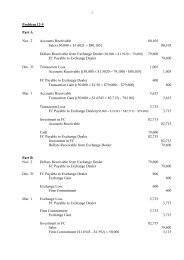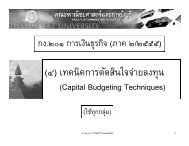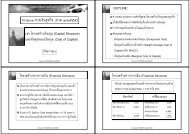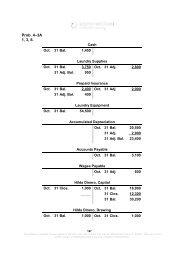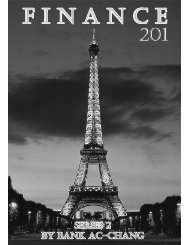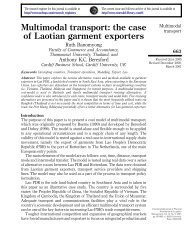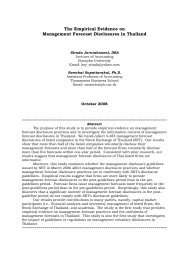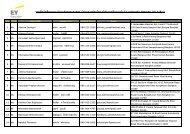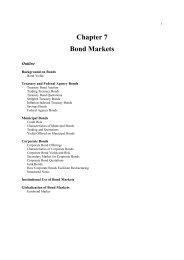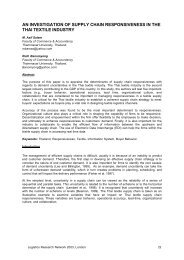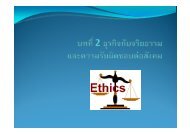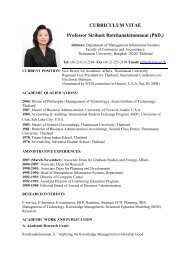The Role of Communication Strategies in Change Management ...
The Role of Communication Strategies in Change Management ...
The Role of Communication Strategies in Change Management ...
You also want an ePaper? Increase the reach of your titles
YUMPU automatically turns print PDFs into web optimized ePapers that Google loves.
Somboon Kulvisaechana<br />
undertaken. Fundamentally, there are diverse ways to formulate change strategies, depend<strong>in</strong>g<br />
upon the extent <strong>of</strong> potential change, the time and the <strong>in</strong>formation available and the power<br />
distribution <strong>in</strong> the organization (Heracleous and Langham, 1996). Accord<strong>in</strong>g to the literature,<br />
a change management team with high credibility and <strong>in</strong>tellectual ability should be identified<br />
<strong>in</strong> the first place (Heracleous and Langham, 1996). Such a team normally comprises change<br />
agents, or top managers, and other key persons to trigger and mobilize the change eng<strong>in</strong>es<br />
throughout the organization. Not only do the top managers play this critical role, but middlelevel<br />
managers can also br<strong>in</strong>g about pr<strong>of</strong>ound change s<strong>in</strong>ce they are the ones who directly<br />
<strong>in</strong>volve <strong>in</strong> day-to-day bus<strong>in</strong>ess operations (Harari, 1999b).<br />
Although a debate between general managers and change specialists <strong>in</strong> tak<strong>in</strong>g charge <strong>of</strong> the<br />
change drives is substantial, there is usually one <strong>in</strong>dividual, regardless <strong>of</strong> those titles, who<br />
takes charge <strong>of</strong> ensur<strong>in</strong>g the change effort takes place and is well carried out (Burnes, 2000).<br />
With this respect, Hartley et al. (1997) and Beer (1994) argue that there has been relatively<br />
little empirical research on the clear-cut roles played by change agents. However, Buchanan<br />
and Boddy (1992), cited by Burnes (2000: p. 298), analyze the skills and competency<br />
essential to be a successful change agent by depict<strong>in</strong>g that “a picture <strong>of</strong> the change agent is a<br />
highly skilled and well-tra<strong>in</strong>ed political operator who has not only an <strong>in</strong>-depth knowledge <strong>of</strong><br />
change processes and tools, but also the personal qualities and experiences to use them both<br />
<strong>in</strong> the open, and especially, beh<strong>in</strong>d the scenes.”<br />
In order to formulate change strategies, a series <strong>of</strong> change stages needs to be closely<br />
scrut<strong>in</strong>ized. Traditionally, Lew<strong>in</strong> (1947), cited by Burnes (2000), provides a classic<br />
framework <strong>of</strong> change levels: unfreez<strong>in</strong>g, mov<strong>in</strong>g and refreez<strong>in</strong>g. Each phase is consistent<br />
with certa<strong>in</strong> social behaviors and a particular cognitive state (Brown, 1995). A better<br />
understand<strong>in</strong>g <strong>of</strong> change has been supported by empirical evidence from various authors,<br />
namely Weiss (2001), Bloodgood and Morrow (2000), Bolman and Deal (1999), and Day<br />
(1999). In the recent work <strong>of</strong> Armenakis and Bedeian (1999), employee behaviors <strong>in</strong> the<br />
change process have been extensively studied. Furthermore, Isabella (1990) and Jaffe et al.<br />
(1994) propose a relatively similar model <strong>of</strong> change stages as to the employee’s reaction as<br />
shown <strong>in</strong> Figure 3.<br />
12



